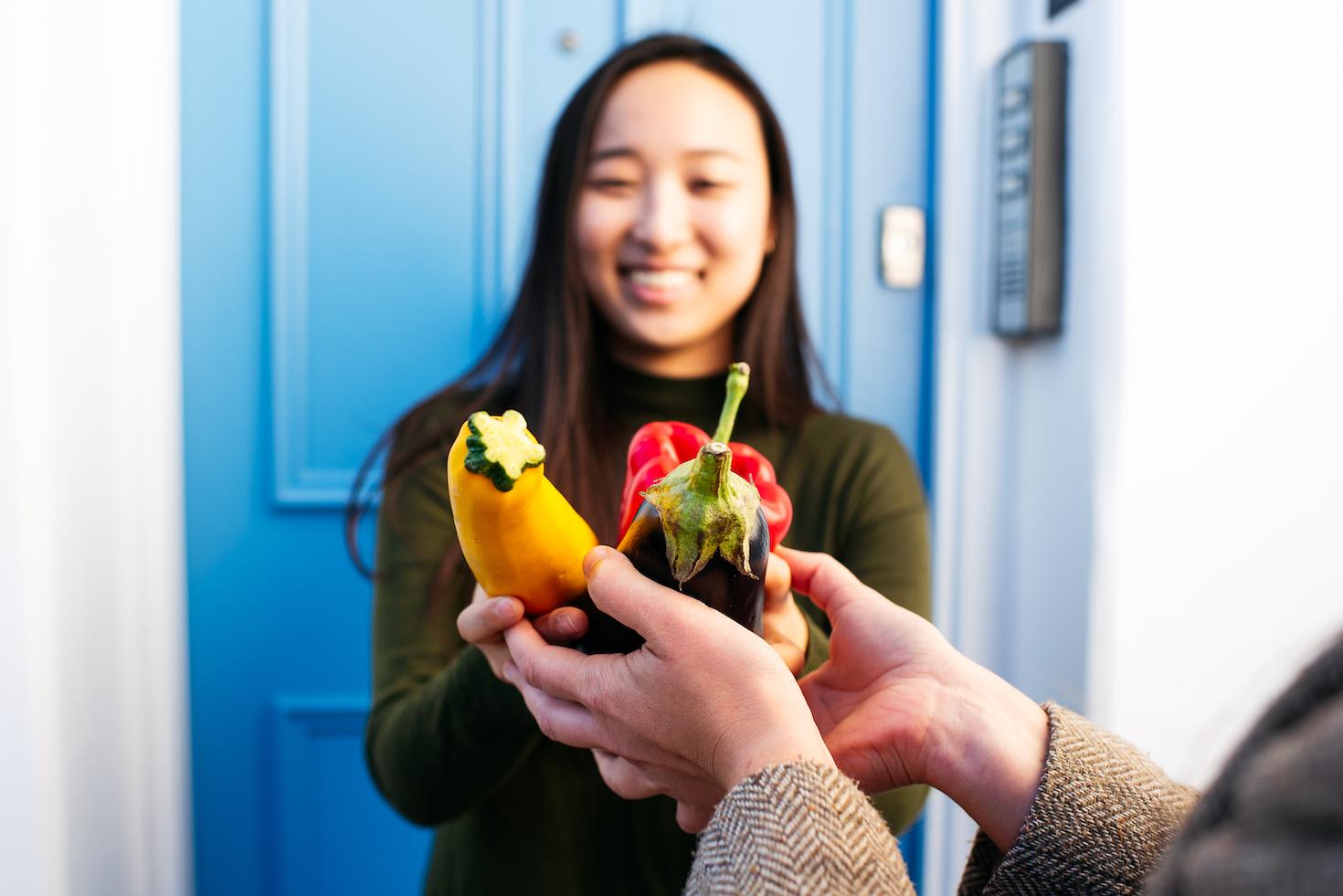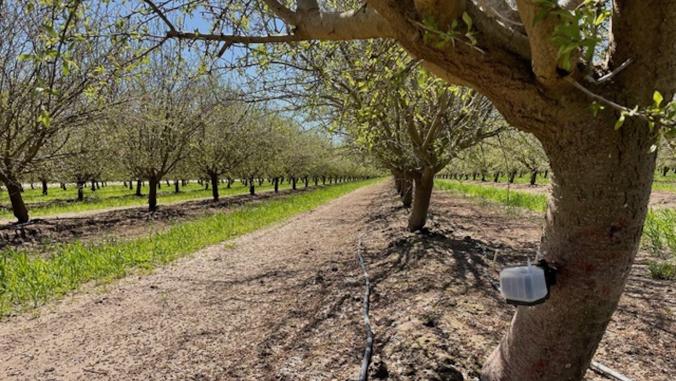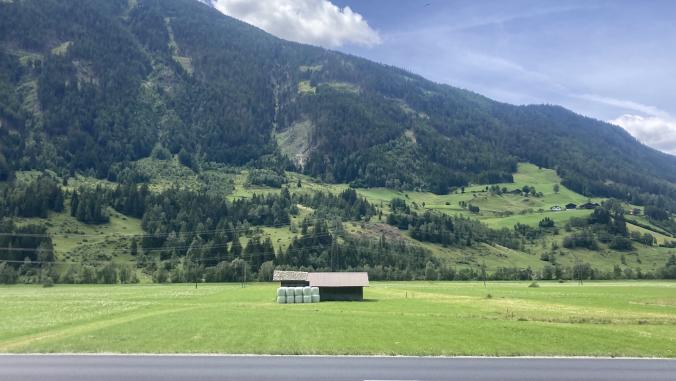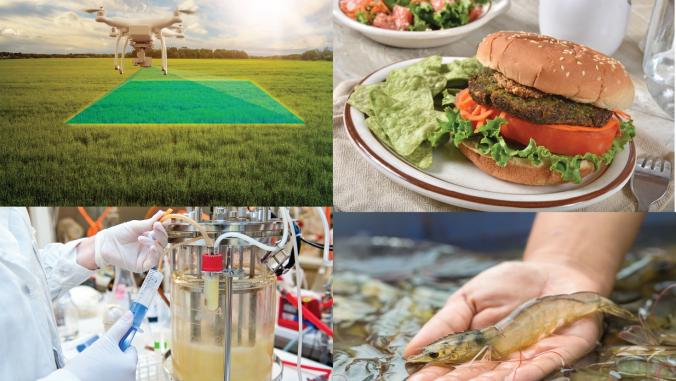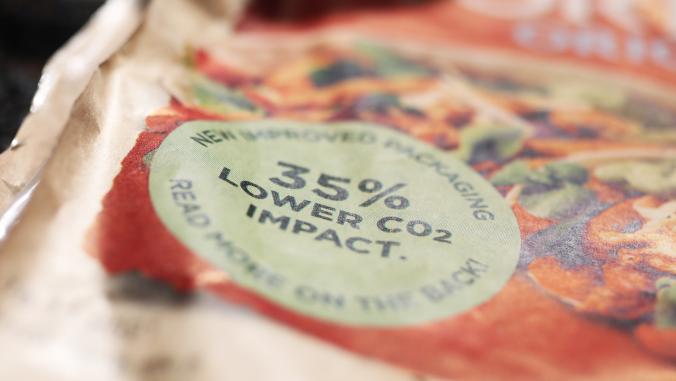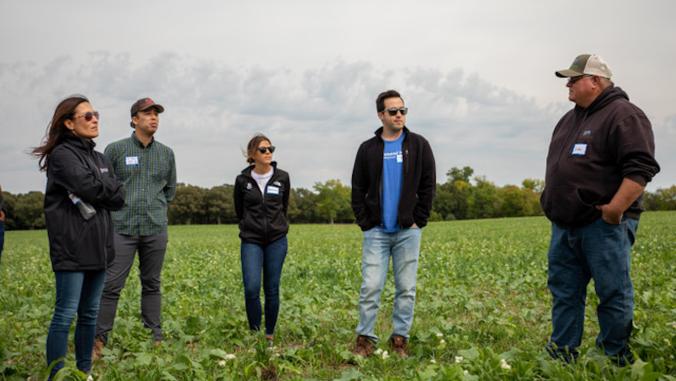Food donation isn’t exactly the most lucrative business. Olio, a food rescue startup that allows neighbors to share surplus food via the company’s app, knows this only too well. "Right now, if we keep going as we are, Olio is going to die," said Anne-Charlotte Mornington, the startup’s head of impact.
Olio isn’t financially sustainable and has relied on venture capital investments to continue operating and providing its service. But Mornington knows this isn’t a long-term solution, so she and her colleagues have been on a quest to explore financial alternatives.
One of her big hopes is generating carbon credits (and the corresponding payments) for the embedded emissions in the food Olio diverts from landfills. "Carbon credits are good for addressing market failures and food waste is one of those," Mornington told me. That’s why she’s been collaborating with Verra, a non-profit that sets and verifies carbon credit standards, over the past 18 months to develop a new methodology for food waste carbon credits.
Verra plans to publish its methodology later this month — and Olio hopes to be the first project to go through the verification process to generate credits. But Olio isn’t the only food rescue organization struggling to make ends meet. Elizabeth Guinessey, Verra’s food and blue carbon innovation manager, spearheads the methodology and said she’s receiving weekly inquiries from other food rescuers anxiously awaiting its launch.
Leaving a precarious world behind
Why are food rescue nonprofits and businesses so excited about this new opportunity? Saving food from being wasted in supermarkets, restaurants, homes and other places by donating it to people in need is one of the few unmistakably good things most people in the food systems community can get behind.
Yet despite their clear social and environmental services, public and private funding is too scarce for capital-intensive food rescue operations — many of which require expensive assets such as trucks, warehouses and cold storage facilities to move food around and preserve it.
Once the food is eaten, it’s usually the end of the story, unlike nature-based offset projects that have a risk of reversal.
Eva Goulbourne, a food waste expert, told me they operate in an "unbelievably precarious world" without sustainable financial streams and spend too much time fundraising. The food waste nonprofit ReFED estimated that in the U.S. alone, making headway on food rescue will require $1.5 billion of additional funding to what’s available today through grants, tax benefits and impact investments. This additional funding would achieve a reduction of 7.8 million metric tons of CO2 equivalents or the emissions generated from the energy used in nearly a million homes for a year, according to my calculations.
Given this considerable carbon reduction potential and buzzing interest in carbon markets, it’s understandable that food rescue groups are keen to get a slice of the pie. Dana Gunders, executive director of ReFED, sees this as an exciting moment that will provide "a new level of validation to the climate benefits of food waste reduction."
A doable data challenge, but who qualifies?
Compared to other forms of carbon credit generation, the food rescue pathway seems relatively straightforward — Guinessey’s food waste methodology will have about 40 pages. In contrast, her work on blue carbon stretches over more than 200.
Overall, it’s a less complex endeavor than estimating carbon sequestered on a farm or in an ocean-based project. For example, a project would demonstrate that surplus food was collected from a supermarket and donated to a community in need and calculate the emissions avoided by not adding those products to a landfill. The potential risk of the food being thrown away rather than eaten by the recipients, alongside other types of emission leakage, will be factored into the methodology.
This process is doable with the technology and science we have available today to track and estimate product-based carbon emissions. And it doesn’t beg the same questions of permanence which many other carbon credit projects struggle with. Once the food is eaten, it’s usually the end of the story, unlike nature-based offset projects that have a risk of reversal.
Still, it doesn’t mean food rescue’s funding problem is a thing of the past. For one, Guinessey pointed out that many food rescue operations are too small and decentralized to generate enough credits to make the process worthwhile.
Second, because many organizations are already operational, they may not meet Verra’s additionality requirements. To be verified, projects must demonstrate that they go beyond legal food rescue requirements, face significant investment, institutional, cultural or social adoption barriers, are not common practice and started no more than two years before registering.
Nonprofits and companies that have rescued food for longer must demonstrate that the carbon credits fund new or expanded services or markets. So it may take a while for the first verified credits to become available, especially as most food rescue organizations are unfamiliar with the carbon market ecosystem altogether.
Additional should mean additional
Of course, as with any other type of carbon credit, buyers will have to look carefully at the projects’ quality and who verified it. Food rescue-derived carbon credits from other registries and developers are already on the market — and their legitimacy isn’t always apparent.
CoreZero, for example, recently started offering credits in collaboration with the Mexican FoodBanking Network (BAMX). According to the additionality criteria CoreZero shared with GreenBiz, it doesn’t require BAMX to increase its total volume of rescued food. The startup argues that the credits enable food rescue practices since the food bank is grant-dependent rather than based on a self-sustaining economic model. But merely providing a secure funding stream won’t guarantee actual emissions reductions. Instead of using carbon credit payments to expand its services, BAMX may reduce its fundraising efforts and maintain the same food volume it has rescued prior to receiving carbon payments. In this case, there wouldn’t be any additionality.
Given all these limitations, I’m curious to see how many projects will make it past Verra’s process. If it goes well, it might encourage the food waste and carbon credit communities to embark on a second, more complex journey — verifying practices that avoid waste in the first place rather than just diverting it, which make up the bulk of food waste emissions.
